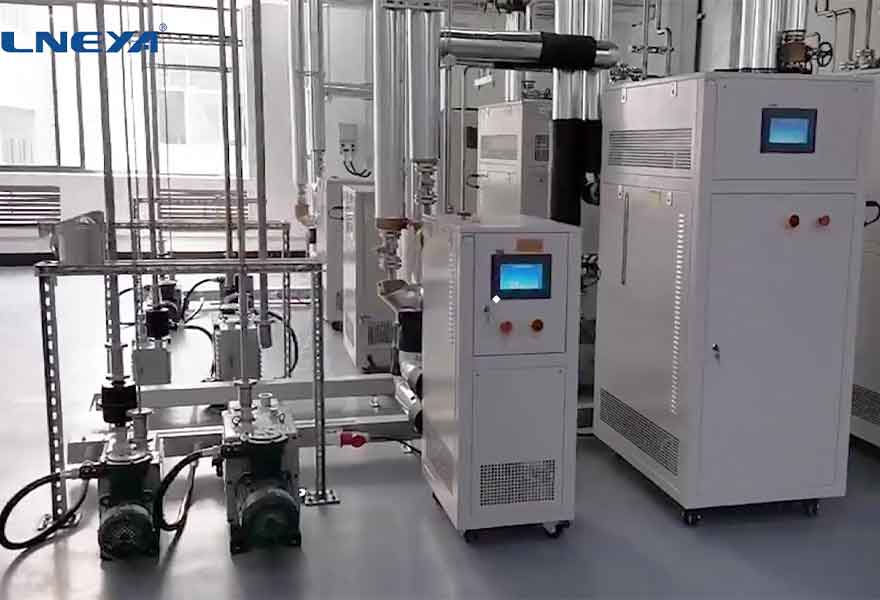EV Battery Pack Cooling System
Contacte-nos hoje para obter a solução perfeita de controlo da temperatura
The function of the ev battery pack cooling system is to cool the battery pack and heat the battery pack in low temperature environments. When the battery pack is charging and discharging, it will release a certain amount of energy, so the battery pack needs to be cooled.
During the charging and discharging process of the power battery, chemical energy is converted into electrical energy, and then the electrical energy is converted into kinetic energy. Since the conversion of energy generates heat energy, when the heat energy cannot be released in time, the temperature around the power battery will increase, thus affecting the physical stability of the battery pack and reducing its performance. If the power battery is in a high temperature state for a long time, it will not only affect the performance, but also affect the service life of the battery, thus affecting the performance of the vehicle. In addition, when abnormal weather occurs, it will also affect the performance of the car’s power battery.
The cooling of the ev battery pack cooling system is to cool the drive motor, controller, DC/DC and other related components, while the cooling of the power system is to cool the power battery and vehicle charger.

Introduction to the cooling methods of ev battery pack cooling system:
Air cooling is a heat dissipation method that uses low-temperature air as the medium and uses heat convection to reduce the temperature of the battery. It is divided into natural cooling and forced cooling (using fans, etc.). This technology uses natural wind or fans, combined with the car’s own evaporator to cool the battery. The system has a simple structure and is easy to maintain. It was used in early electric passenger cars and is also adopted in current electric buses and electric logistics vehicles.
Liquid cooling technology uses liquid convection heat transfer to take away the heat generated by the battery and reduce the battery temperature. The liquid medium has high heat transfer coefficient, large heat capacity, and fast cooling speed, which can reduce high temperatures and improve the consistency of the temperature field of the battery pack. At the same time, the thermal management system is also relatively small. The form of the liquid cooling system is more flexible: the battery cells or modules can be immersed in liquid, cooling channels can be set up between battery modules, or a cooling plate can be used at the bottom of the battery. When the battery is in direct contact with liquid, the liquid is insulated (such as mineral oil) to avoid short circuit. At the same time, the air tightness requirements for liquid cooling systems are also high. In addition, there are mechanical strength, vibration resistance, and life requirements. Liquid cooling is currently an option for many electric passenger vehicles.
Direct cooling (direct cooling of refrigerant): Using the principle of latent heat of refrigerant evaporation, an air conditioning system is established in the vehicle or battery system. The evaporator of the air conditioning system is installed in the battery system. The refrigerant evaporates in the evaporator quickly and efficiently. Take away the heat from the battery system to complete the cooling of the battery system. At present, the cooling method through direct cooling is basically used in electric passenger cars.
The ev battery pack cooling system is suitable for the new generation of energy-based battery packs. It can effectively test the environmental adaptability of the battery pack, improve the safety and reliability of the vehicle, and ensure the good operation of the vehicle in a variety of complex environments. The products are widely used in performance testing of motors and battery packs, rapid temperature rise and cooling thermal shock tests, and environmental adaptability tests.
Correio eletrónico: info@lneya.com ID WeChat: +8615251628237 WhatsApp: +86 17851209193
 LNEYA
LNEYA
 简体中文
简体中文


















































































